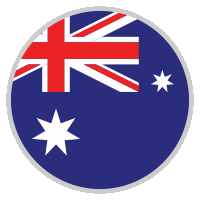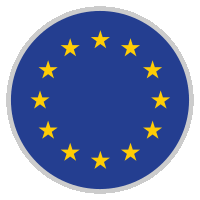Catalog No.
Product Name
Application
Product Information
Product Citation
-
CXCR4 antagonist
Plerixafor is an immunostimulant used to multiply hematopoietic stem cells and it is a chemokine receptor-4 antagonist for mobilization of hematopoietic stem cells for transplantation.- Federico Antoniciello, .et al. , Front Mol Biosci, 2023, May 11;9:887564 PMID: 35647033
- Mei Zheng, .et al. , Biomed Pharmacother, 2022, Jun;150:112996 PMID: 35462338
- Asiedu KO, .et al. , EJNMMI Res, 2018, Dec 13;8(1):109 PMID: 30547233
- Kingsley O. Asiedu, .et al. , Clin Cancer Res, 2017, Jun 1; 23(11): 2759-2768 PMID: 27965305
-
CXCR4 antagonist
AMD 070 is a CXCR4 chemokine receptor antagonist.- Uchida D, .et al. , Oncol Rep, 2018, Jul;40(1):303-308 PMID: 29749473
- Mamoru Morimoto, .et al. , BMC Cancer, 2016, 16: 305 PMID: 27175473
-
CXCR1/CXCR2 antagonist
SCH527123 is a potent and selective antagonist of the human CXCR1 and CXCR2 receptors with IC50 of 42 nM and 3 nM, respectively.- Ruijie Zhang, .et al. , Int J Oncol, 2022, May;60(5):50 PMID: 35315502
- Fu S, .et al. , Int J Oncol, 2018, Jul;53(1):349-357 PMID: 29749433
- Fu S, .et al. , Anticancer Res, 2018, Nov;38(11):6271-6279 PMID: 30396947
-
CXCR4 antagonist
AMD 3465 is a potent, selective CXCR4 antagonist.- Kentaro Suzuki, .et al. , Sci Rep, 2019, 9: 15284
-
CXCL8/CXCR1/2 Inhibitor
Reparixin is a potent inhibitor of both CXCL8 receptors CXCR1/2, it inhibits weakly CXCR2-mediated cell migration (IC50=100 nM), whereas it strongly blocks CXCR1-mediated chemotaxis (IC50=1 nM).- Naour AL, .et al. , J Mol Cell Biol, 2019, Sep 3 PMID: 31504643
- Wigenstam E, .et al. , Toxicology, 2015, Feb 3;328:40-7 PMID: 25497111
-
GPR35/CXCR8 agonist
GPR35 agonist 1 (compound 50) is a potent and specific G protein-coupled receptor-35 (GPR35)/CXCR8 agonist with an EC50 of 5.8 nM, displays good druggability. -
CXCR4 Inhibitor
MSX-122 is an orally bioavailable inhibitor of CXCR4 (IC50 = ~10 nM) with potential antineoplastic and antiviral activities. CXCR4 inhibitor MSX-122 binds to the chemokine receptor CXCR4, preventing the binding of stromal derived factor-1 (SDF-1) to the CXCR4 receptor and receptor activation, which may result in decreased tumor cell proliferation and migration. -
CXCR2 antagonists
CXCR2-IN-1 is a central nervous system penetrant CXCR2 antagonists with a pIC50 of 9.3. -
CXCR4 antagonist
Plerixafor is an immunostimulant used to multiply hematopoietic stem cells and it is a chemokine receptor-4 antagonist for mobilization of hematopoietic stem cells for transplantation.- Hitoshi Maeda, .et al. , Int J Biol Macromol, 2022, Sep 17;221:1439-1452 PMID: 36126807
- Jingying Chen, .et al. , Development, 2022, Jul 1;149(13) PMID: 35694896
- Narubhorn Ongprakobkul, .et al. , Am J Orthod Dentofacial Orthop, 2022, Mar 2;S0889-5406(22)00107-X PMID: 35248418
- Chunliang Liu, .et al. , J Trace Elem Med Biol, 2022, Jan 10;71:126927 PMID: 35030482
- Eri Watanabe, .et al. , Angiogenesis, 2020, Jul 22 PMID: 32699964
- Alessandra Esposito, .et al. , Bone, 2020, Jul 3;139:115521 PMID: 32629173
- Kentaro Suzuki, .et al. , Sci Rep, 2019, 9: 15284
- Ichimizu S, .et al. , J Control Release, 2019, May 10;304:156-163 PMID: 31082432
- Nan Li, .et al. , Diagn Pathol, 2019, Jan 12;14(1):3 PMID: 30636642
- Thida W, .et al. , Biochem Biophys Res Commun, 2018, Nov 20. pii: S0006-291X(18)32477-X PMID: 30470571
- Henry R. Hampton, .et al. , Nat Commun, 2015, 6: 7139 PMID: 25972253
-
CXCR2 antagonist
SB 265610 is a nonpeptide, allosteric, inverse agonist of CXCR2 (Kd = 2.51 nM) that prevents receptor activation by binding to a region distinct from the agonist binding site. It does not bind to the related CXCR1 receptor.1 It has been shown to prevent neutrophil chemotaxis both in vitro and in a rat model of hyperoxia-induced lung injury. -
CXCR4 antagonist
AMD-070 hydrochloride is a potent and selective antagonist of CXCR4 with an IC50 value of 13 nM in a CXCR4 125I-SDF inhibition binding assay, inhibit the replication of T-tropic HIV-1 (NL4.3 strain) in MT-4 cells and PBMCs. -
CXCL8 receptor inhibitor
Reparixin L-lysine salt is an inhibitor of CXCL8 receptor, also inhibit CXCR1 and CXCR2 activation,which has been shown to attenuate inflammatory responses in various injury models. -
CXCR2/CXCR1 antagonist
SCH 563705 is a potent dual CXCR2(IC50= 1.3 nM)/CXCR1(IC50= 7.3 nM) antagonist. -
GPR35/CXCR8 agonist
Kynurenic acid, an endogenous tryptophan metabolite, is a broad-spectrum antagonist targeting NMDA, glutamate, α7 nicotinic acetylcholine receptor. Kynurenic acid is also an agonist of GPR35/CXCR8. -
CXCR7 modulator
CXCR7 modulator 1 (compound 25) is a potent and orally bioavailable peptoid hybrid CXCR7 modulator, with a Ki of 9 nM. -
GPR35/CXCR8 agonist
Kynurenic acid sodium, an endogenous tryptophan metabolite, is a broad-spectrum antagonist targeting NMDA, glutamate, α7 nicotinic acetylcholine receptor. Kynurenic acid sodium is also an agonist of GPR35/CXCR8. -
CXCR2 receptor antagonist
Nicotinamide N-oxide, an in vivo nicotinamide metabolite, is a potent, and selective antagonist of the CXCR2 receptor. -
CXCR3 antagonist
SCH 546738 is a potent, orally active and non-competitive CXCR3 antagonist, the affinity constant (Ki) of SCH 546738 binding to human CXCR3 receptor is determined to be 0.4 nM in multiple experiments. -
CXCR3 antagonist
AMG 487 S-enantiomer is the S enantiomer of AMG 487. AMG 487 is an antagonist of the chemokine receptor CXCR3. -
CXCR4 antagonist
IT1t dihydrochloride is a potent CXCR4 antagonist; inhibits CXCL12/CXCR4 interaction with an IC50 of 2.1 nM. -
CXCR4 antagonist
Motixafortide (BKT140 4-fluorobenzoyl) is a novel CXCR4 antagonist with an IC50 vakue of ??1 nM.








